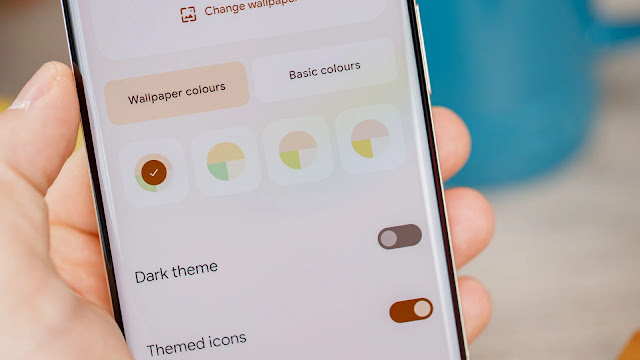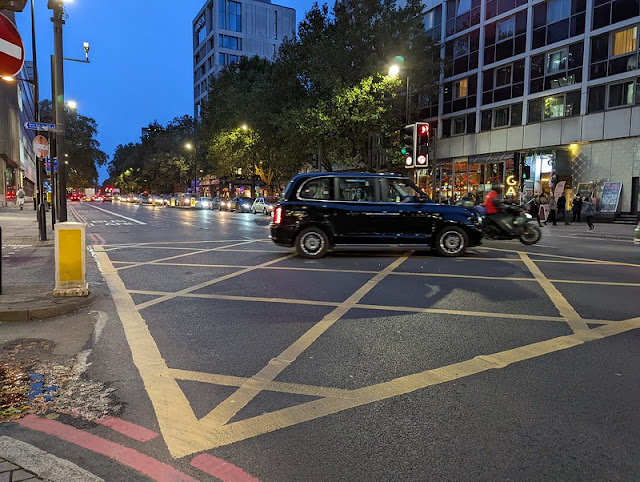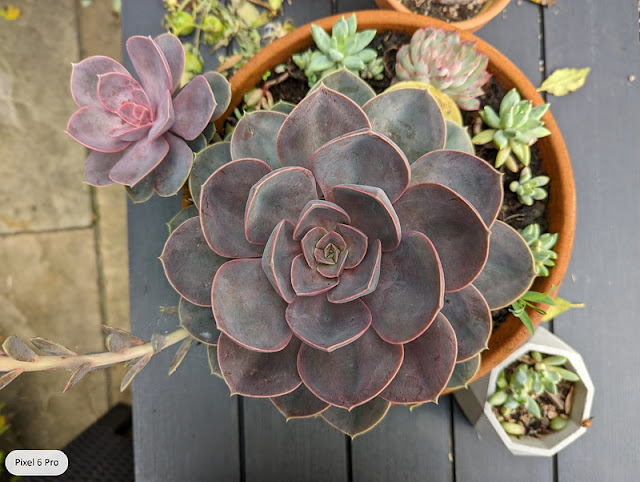The Pixel 6 Pro offers up a familiar Android experience but dressed with a new look and running new hardware that reaches far beyond anything we've seen from a Pixel before.
Should I Buy The Google Pixel 6 Pro?
Pros
- Beautiful, responsive display
- Great real-world performance
- Superb cameras
- Nice user experience
Cons
- Big, thick and heavy
- Divisive aesthetics
- Max volume & brightness could be better
- Confusing charging standard
Our Verdict
Price When Reviewed
- $899
After the initial hype surrounding Google's answer to the iPhone – with the debut of the original Pixel, back in 2016 – subsequent releases, although competent, have failed to capture the attention of mainstream smartphone buyers and remain reserved for the tech-savvy Android fans already aware of the Pixel line's particular strengths and standout selling points.
This year, however, Google is hoping to shake things up, with the latest and greatest entry in the Pixel lineage – the Pixel 6 Pro – sporting a feature set specifically engineered to position it as a direct competitor to the Pro Maxes and Ultras that occupy the top end of the smartphone market, all the while maintaining an approach that's distinctly 'Google'.
The 'Pro' suffix may already be commonplace in the smartphone space but this is the first time Google has applied it to a Pixel; with previous entries only ever really being separated by size – sporting an 'XL' on the end of their names. It's the first indication that, despite some familial traits, this year's Pro is meant to be seen as a different breed to the Pixels that have preceded it.
Google bills the Pixel 6 Pro as its first proper flagship phone, and while that seems unnecessarily disparaging to some of the line's previous entries, you can see why the company might be throwing a little extra mustard on this particular release. It's upgraded the primary camera hardware for the first time in years, pushed the display tech to new heights, and imbued both entries with its first own-brand SoC (system-on-chip), in Tensor.
Design And Build
- Biggest, heaviest Pixel ever
- Camera bar is distinctive
- 8.9mm thick, 210 grams
- Best used two-handed
The 6 Pro is the biggest, thickest, heaviest Pixel ever, and by quite some margin; sporting a squared silhouette and an industrial design that's undeniably unique, it's instantly recognisable, though it might struggle to find as broad appeal as some of its competitors.
Just as Samsung's S21 range opted for the 'Contour Cut' camera bump as its standout design trait this year, Google has replaced the decidedly iPhone-esque camera squircle from the last two generations of Pixel with what it's dubbed the "camera bar."
There's a consistent visual identity across both Pixel 6 phones, however, the segment of glass above the camera bar is taller on the Pro than it is on the standard model, creating a sort of 'forehead' – a visual imbalance that results in a less elegant, top-heavy sort of appearance. It's a small quirk of the Pro's design but something previous Pixels have suffered from as well; with the smaller Pixel 2's reversed camera and flash positioning (compared to its 2 XL sibling) looking equally as odd.
Beyond its distinctive visuals, the Pro feels nicely put together, with pleasingly tactile hardware controls down the right side of the frame and a construction that's IP68 certified against dust and water. Its size and weight, however, do mean that it's likely safer and more comfortable to use as a two-handed device the majority of the time.
Google's also nixed the long-running fabric Pixel cases, replacing them with partially recycled plastic translucent cases, which don't have as much character in their own right but do at least let you better appreciate the colour of the phone you've bought.
Display
- Expansive, crisp OLED display
- Always-on & 'At a Glance' support
- Dynamic 10Hz to 120Hz high refresh rate
- New one-handed mode & Extra Dim accessibility tools
- Lacklustre in-display optical fingerprint sensor & max brightness
The 6 Pro's sizeable footprint comes from its expansive 6.7in 19.5:9 QHD+ OLED panel. It makes an excellent first impression, trumping anything existing Pixel users will be used to; primarily as a result of its sheer size, but also its impressively high pixel density (512ppi), and the raised ceiling of its maximum refresh rate – surpassing the Pixel 4, Pixel 5 and Pixel 6, which all top out at 90Hz.
Being a high-quality OLED, it also offers wonderfully vibrant colours, great contrast and inky blacks (it could be brighter though), while being built on an LTPO process facilitates the panel's dynamic refresh rate support, which can ramp up to 120Hz (for super-smooth scrolling and responsive gaming) or scale right down to 10Hz to help with battery longevity, similarly to Apple's ProMotion tech, which was introduced to this year's iPhone 13 Pro & 13 Pro Max.
The smaller model (on the right, in the image below) still features pillowed cover glass, the display itself just doesn't extend as close to the edge, meaning you're left with a less elegant looking flat screen, surrounded by a markedly thicker bezel compared to the 6 Pro, i.e. all of the weaknesses, none of the benefits.
Night Light filters out blue light for easier and less disruptive viewing in low light, while the new Extra Dim feature (tucked away in Android 12's accessibility menu), lets you push screen brightness below its normal minimum, for even greater viewing comfort. Google has finally seen fit to make one-handed mode a native part of the Android experience this year and it's essential when trying to reach content near the top of the 6 Pro's huge display, shifting everything down momentarily in a similar fashion to iOS' long-standing Reachability feature.
For the first time on a Pixel phone, there's also an in-display fingerprint sensor. Aside from the ill-fated Pixel 4, every Pixel has featured a rear-mounted capacitive sensor and all have been responsive and reliable, with gesture support made available on later iterations (letting you swipe down the notifications tray, for example).
By moving to an in-display system, you lose such gesture support and, surprisingly, while the optical sensor used is reliable enough in day to day use, it's markedly slower than the capacitive alternatives of old, as well as the ultrasonic in-display sensors used by the likes of Samsung. In a sense, despite using more up-to-date technology than previous Pixels, the 6 Pro's in-display unit sort of feels like a downgrade.
Audio
- USB-C (wired) or Bluetooth 5.2 (wireless)
- Supported audio codecs include aptX HD and LDAC
- Stereo speakers are clear but could be louder
With no headphone jack in sight (and none having featured on a mainline Pixel for a few generations now), you're two options for in-ear listening are wired audio via the phone's USB-C port or wireless audio by way of the phone's Bluetooth 5.2 connectivity (bolstered by "dual antennas for enhanced quality and connection," according to Google).
For those looking to use wired audio who are already fans of the brand, Google doesn't include any related accessories in-box but does sell both Pixel-branded USB-C buds and a USB-C to 3.5mm adapter, while wireless headphones fans have the option of Pixel Buds A (or any other Bluetooth headphones, if you're brand-agnostic). Codec-wise, wireless audio supports everything from SBC and AAC up to aptX, aptX HD and LDAC too.
The Pixel 6 Pro also sports a set of stereo speakers, although there's a definite bias – with the down-firing grille to the right of the USB-C port handling the majority of the bass tones, while the earpiece speaker skews towards the mids and highs. As such, it gives imperfect stereo separation but good clarity throughout its volume range, meaning you can blast your tunes without audio quality falling apart. Louder maximum volume would have been nice, though.
Software And Features
- First phone to run Android 12 out the box
- Material You makes for a slicker, more personalised user experience
- New privacy, security and gaming dashboards
- 3 years of OS updates, 5 years of security updates
Curious Pixel owners (along with a handful of devices from other brands, like Realme, Oppo and Xiaomi) have been able to get hands-on with the various beta releases of Android 12 throughout 2021, however, the Pixel 6 and 6 Pro are the first phones to sport the finished release of company's latest mobile OS, out the box.
Joining existing features like Focus Mode, Dark Mode and Google Assistant voice input are the likes of the security hub – which, similarly to BlackBerry's DTEK software, makes recommendations on how to improve the security of the phone/Google account (enabling Find My Device, making sure you're running the latest Google Play system update etc.) and the Privacy Dashboard.
New settings for microphone and camera access can now be enabled from the phone's quick settings, but the privacy menu and subsequent dashboard offer a more complete set of controls, covering device user data management to permissions accessed by apps over the last 24 hours (including location, camera and microphone access); with the ability to manage such apps and permissions, straight from said dashboard.
While this is unlikely to be a feature that a lot of users seek out, its inclusion in Android 12 is wholly appreciated and will hopefully become an aspect of Android on all devices – not just Pixels – going forward.
There's also a new gaming dashboard that can be set up to display an fps (frames per second) counter and offers quick access to screenshots and screen recording; letting you capture and share your last kill streak or five-star unlock in Genshin Impact.
Even with these new additions, Android on the Pixel 6 Pro still feels like one of the cleanest and easiest to navigate implementations of the OS to date; although now it comes with more personality and fluidity than ever before.
Buying Pixel has also always also guaranteed the best and longest-running software support of any Android phone, but for those who opt for this year's 6 or 6 Pro, the company has gone the extra mile, adding to its predecessor's three years of OS and security updates with five years of the latter.
This trumps even Samsung's generous commitment, which at the start of 2021, granted four years of security updates to a huge contingent of the company's portfolio from the last few years.
Performance
- First phone with Google's own Tensor SoC
- Benchmarks don't compare with conventional rivals
- Focus on machine learning and AI tasks
- Great everyday and gaming performance
While, for the most part, the Pixel 6 Pro reads like a pretty cookie-cutter upgrade – with new software features, a nicer screen and better cameras than last year's entry – one area that walks a wholly untrodden path is its chipset.
Google's no stranger to slipping its own silicon inside Pixel phones – with the likes of the Pixel Visual Core and later, the Pixel Neural Core – but these chips have always operated alongside a lead Qualcomm-made Snapdragon SoC. For the first time on a Pixel, however, Google has opted to create its own silicon, with Tensor.
Tensor's architecture is modelled around the notion of "heterogeneous computing" – a blend of processors and coprocessors tailor-made for specific tasks that come together to create a more power-efficient chipset when compared against more generic alternatives. Bringing chip design in-house allowed Google to make sure Tensor was optimised for doing the things they wanted the Pixel 6 and 6 Pro to do, better than off-the-shelf silicon would.
As stated during the phone's launch, Tensor is "designed and optimised to run Google's ML (machine learning) models," with an architecture that's "based on where ML models are heading, not where they are today."
While Tensor is by no means a slouch – at launch, company reps were keen to highlight just how much of a performance (80%) and graphical (370%) upgrade it was compared to the (admittedly mid-range) Snapdragon 765G inside last year's Pixel 5 – this focus on machine learning means it doesn't directly compare with top-tier silicon from Qualcomm, MediaTek, or even Apple inside the best and brightest rivals on the market – something that's reflected in our benchmarking results.
Pound for pound, the artificial figures place Tensor (backed up by 12GB of RAM on the 6 Pro) at around the same level of performance as last year's Exynos 990-powered Samsung Galaxy S20 Ultra or this year's budget champ – the Poco X3 Pro – in terms of straight CPU horsepower, but that doesn't take into account Tensor's dedicated TPU – which Google refers to as the chipset's "ML engine", or its Context Hub – which handles low power ML tasks. It's clear that there's more to Google's bespoke hardware than the numbers suggest.
Practical real-world performance proved consistently rapid throughout testing, with demanding games, like Call of Duty Mobile, running at a rock-solid 60fps (and, where supported – on titles such as Real Racing 3 – 120fps), all with acceptable heat build-up. Multitasking was a doddle and while you might be treated to Android 12's new splash screens when you open up an app, you won't be looking at them for long; with practically every app testing live and ready within a second of being tapped on – even the camera.
Battery And Charging
- Largest battery ever in a Pixel (5003mAh)
- Real-world screen-on time demonstrates great longevity
- No charger in-box
- Finding a fully compatible charger may be challenging
Tensor, paired with Android 12's underlying optimisations and that dynamic LTPO display should also mean better power efficiency, helped by the fact that the 6 Pro boasts the largest battery of any Pixel to date, at 5003mAh.
Artificial testing once again suggests that the Pixel 6 Pro is behind the curve, however, in real-world use, it handily beat out its predecessor, as well as newcomers like the iPhone 13; despite having a larger, higher resolution, higher refresh rate display to power.
The Pixel 6 Pro consistently delivered approximately 9.5 hours of screen-on time per charge, whereas the iPhone managed 8.5 and the Pixel 5 managed only 5 hours – a wholly respectable figure that means this handset can handle up to two days of use per charge.
Your best bet is to buy Google's new own-brand 30W USB-PD 3.0 (PPS) power adapter (for £25/€29/US$25), if you want to hit the intended 50% charge in 30 minutes that Google quotes, otherwise trying to find a charger that adheres to both the right Power Deliver standard and supports PPS (programmable power supply) technology isn't as easy as you might think (based on cursory research during this review).
Testing with multiple third-party PD chargers, the closest to Google's estimated charge time came from a 45W laptop charger, which surpassed 50% charge (enough for a day's use) after approximately 40 minutes, with a full charge still taking 2.25 hours total.
Cameras
- First Pixel with main, ultrawide and telephoto sensors
- 11.1Mp front-facing hole-punch camera
- Superb dynamic range and accurate colours
- Magic Eraser and Motion Mode aren't perfect but still great additions
Google's Pixel phones have always served as the poster children for computational photography, with their prowess continuing to grow, despite Google leaving the underlying 12.2Mp primary (Sony's IMX363) sensor untouched since 2018's Pixel 3.
The Pixel 5's camera was comparable to the competition of the time, despite the ageing hardware at work, but it hinted at the fact that Google's imaging team might have truly exhausted how far they could push their computation tech on such hardware in any meaningful way.
As such, the shift to a new 50Mp primary snapper on the Pixel 6 Pro is a pretty significant milestone for the line, and that's before you factor in that this is the first Pixel to also boast both an ultrawide (12Mp) and a (48Mp) periscopic telephoto camera too – something the standard Pixel 6 loses out on. And all in one camera setup.
Despite a new set of sensors, Google's imaging smarts – helped by Tensor's integrated ISP – are alive and well. It takes top-class shots across the board, demonstrating some of the best dynamic range of any phone currently on the market and by extension, some of the most accurate colours.
In low light, while there's unmistakable noise and grain when you crop in, you'll get a more honest representation of colour compared to the likes of the iPhone 13 Pro, which tries to more aggressively white balance under similar conditions.
Accurate colours do, however, mean that shots lack some of the visual 'pop' that entries like Samsung's Galaxy S21 Ultra offer up, but whether that's a failing falls more to preference.
There's a strong consistency between the main and ultrawide snapper on the 6 Pro too, although the 4x telephoto loses out on the same degree of vibrance. Where the zoom does stand apart is in low light, with a maximum 20x algorithm-supported 'Super Res Zoom' still delivering impressive detail, even in the dark.
Portrait mode, be it via the main or front camera, is pleasing, with some of the nicest looking artificial bokeh produced by a smartphone – particularly when snapping on that rear sensor, which appears to add variation in the level of blur based on distance from the camera; something difficult to reproduce artificially.
Magic Eraser isn't perfect, but it's an impressively quick way of painting out unwanted people or objects in a scene. It doesn't always make its mark – be it detecting which elements in a scene you might want removed or leaving a convincing after-image once elements have been removed – but it's one of the better implementations of such a feature; and one that Google will no doubt be keen to improve upon, being one of the Pixel 6's camera's biggest selling points.
Motion Mode, meanwhile, defies logic, in terms of being able to capture a scene in less than a second but still serve up long-exposure-style shots with motion blur that looks as if it was captured over a far longer period of time. It's a feature first popularised on phones by the likes of Huawei, but Google's implementation is significantly faster and easier to use.
At the same time, the camera's inbuilt face unblur is meant to keep faces sharp, even when subjects are moving, and – at least in the well-lit scenarios tested – it proved unflappable.
Price And Availability
Despite the flagship status that Google is imbuing the Pixel 6 Pro with, pricing doesn't quite keep in step with those uber-flagships that the company intends for the phone to be compared against, for better or worse.
Sure, it's the priciest Pixel yet, starting at £849/€899/US$899 for the 128GB model, but that's still a not-insignificant step lower than the top-tier rivals like Samsung's S21 Ultra, Xiaomi's Mi 11 Ultra, Apple's iPhone 13 Pro Max and Oppo's Find X3 Pro, some of which handily surpass the £/US$1000-mark.
The SKU variation by region is also decidedly unique, with only a handful of markets gaining access to the highest capacity 512GB storage model (it's $1,099 in the US).
Both Pixel 6 models hit pre-order on 19 October and went on sale on 28 October, available direct from Google's online store or retailers, including Amazon.
Verdict
Despite the bravado of the hardware Google's presented here, the use cases and functionality that the company has worked hard to implement with Android 12 and Tensor aren't necessarily what immediately appeal to the hardcore audience considering the very rivals the Pixel 6 Pro feels designed to take on.
At the same time, the hardware on offer seems wholly impressive and worthy of the attention Google seems keen to give the 6 Pro: from everyday use to gaming, top-notch camera performance with some powerful and unique features, and real-world battery life that's among the best in the business.
Seldom do we say that you should upgrade from last year's equivalent flagship but the jump from the Pixel 5 to the Pixel 6 Pro is unquestionably meaningful, as are the feature set and abilities it offers up against its most capable competitors.
Provided you're also comfortable with the XL size this Pro sports – not to mention Google's promise that Tensor is a long-term bet in terms of the smartphone industry's growing reliance on ML and AI – then there's little reason to avoid the Pixel 6 Pro, especially for those who already appreciate the Google approach.
Specs
- 6.7in 19.5:9 (up to) 120Hz curved-edge Quad HD+ (1440x1320) LTPO OLED HDR display
- In-display fingerprint sensor
- Gorilla Glass Victus front
- Gorilla Glass 6 back
- Polished alloy frame
- 50Mp wide camera w/ 1.2µm pixels, f/1.85, 82° FoV, 1/1.31in image sensor, OIS + EIS
- 12Mp ultrawide camera w/ 1.25µm pixels, f/2.2, 114° FoV, lens correction
- 48Mp telephoto camera w/ 0.8µm pixels, f/3.5, 23.5° FoV, 1/2in image sensor, OIS + EIS, optical zoom up to 4x, Super Res Zoom up to 20x
- Laser autofocus
- OIS + EIS
- 11.1Mp hole-punch front camera w/ 1.22µm pixels, f/2.2, 94° FoV
- Stereo speakers
- USB-C (3.1)
- Dual SIM (via eSIM)
- 5003mAh battery
- Wired charging up to 30W (USB-PD 3.0)
- Wireless charging up to 23W
- Google Tensor chipset
- Titan M2 security chip
- 12GB RAM
- 128GB/256GB/512GB storage (varies by market)
- Android 12
- WiFi 6E
- Bluetooth 5.2
- NFC
- 5G
- FeliCa chip (Japan-only)
- 210 grams
- 163.9 x 75.9 x 8.9mm
- Colours: Stormy Black, Sorta Sunny and Cloudy White












































0 comments:
Post a Comment